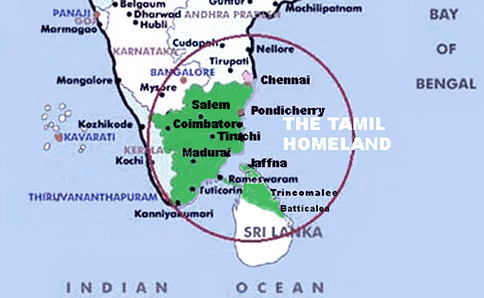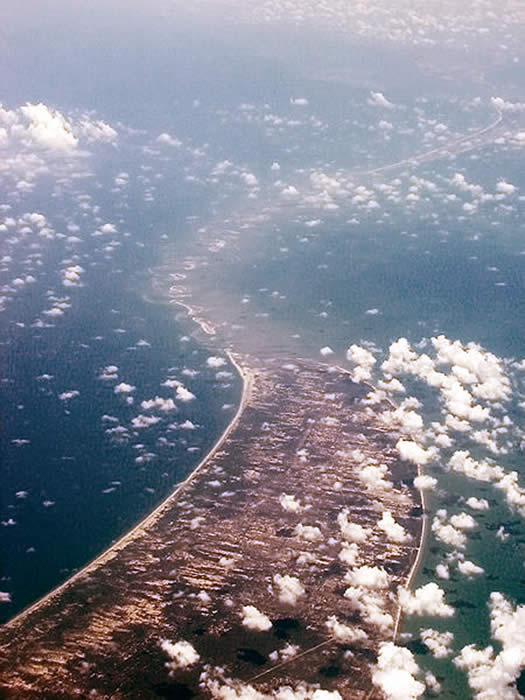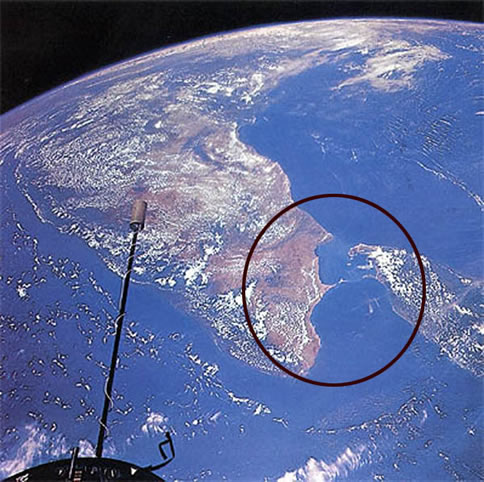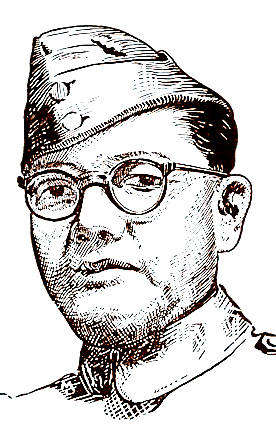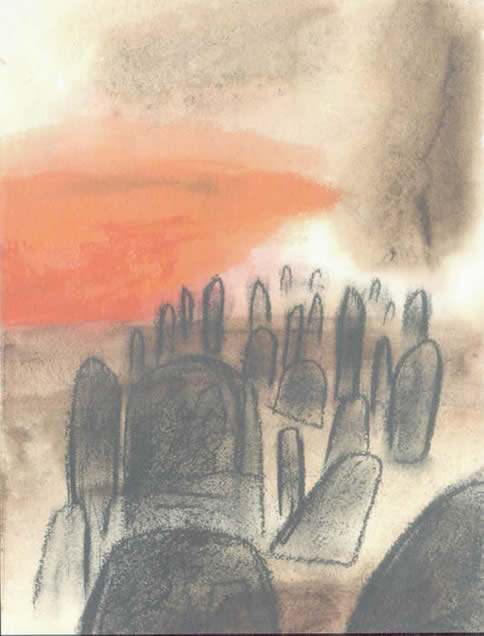Ilankai Tamil Sangam28th Year on the Web Association of Tamils of Sri Lanka in the USA |
|||
 Home Home Archives Archives |
Maveerar Naal 2009மாவீரர் சுமந்த கனவுகளில் ஒரு தேசம் தெரிகின்றது...by Nadesan Satyendra, TamilNation.org, November 11, 2009
Today, the 11th of November is Remembrance Day for the countries of the British Commonwealth such as Great Britain, Canada, Australia and South Africa as well as for some European countries such as France and Belgium. The Cenotaph (meaning Empty Tomb) in London carries the simple inscription "The Glorious Dead" and it is here that a Remembrance service is held each year at 11 am on the Sunday nearest 11 November. For Tamils living in many lands and across distant seas, the 27th of November is the day on which they remember, honour and mourn those who have given their lives in the continuing Tamil struggle for freedom. It is the day marked by the death of Shankar in 1982 - the first death of a cadre of the Liberation Tigers of Tamil Eelam. 27 November 2009 marks the first Maaveerar Naal without the physical presence of Velupillai Pirabakaran - a leader who will live in the hearts and minds of generations of Tamils yet unborn as the undying and heroic symbol of Tamil resistance to alien rule. It is a a broadening and deepening to which Seeman in Tamil Nadu recently gave poignant expression - "உலகம் எங்கும் வாழ்ந்தாலும், நாம் தமிழர்... நீயும் தமிழன், நானும் தமிழன்... தமிழனுக்கென்று ஒரு நாடு வேண்டும்.. " - சீமான் வழங்கியநேர்காணல் - 5 November 2009 The Chola Tiger symbol which Velupillai Pirabakaran selected and the name Liberation Tigers of Tamil Eelam which he gave to the movement that he founded, are rooted in the ancient heritage of the Tamil people - roots which reach out, touch and move the hearts of millions of Tamils living today in many lands and across distant seas - a nation without a state. And during the past several years, Tamils who trace their origins to their homeland in Tamil Eelam and Tamil Nadu ... ... and living today in many lands, including Australia , Andhra Pradesh , Bahrain , Botswana, Canada, Delhi , Denmark , Eelam , Fiji, Finland, France, Germany, Guadelope & Martinique, Hong Kong , Indonesia, Italy, Karnataka, Kerala, Kuwait, Maharashtra, Malaysia, Manipur, Mauritius, Myanmar , Netherlands , New Caledonia & Tahiti , New Zealand , Norway , Quatar, Reunion , Saudi Arabia, Seychelles, Singapore, South Africa, Sweden, Switzerland,Tamil Nadu, Trinidad, United Arab Emirates, United Kingdom, USA have come together on Maaveerar Naal to remember and honour their brothers and sisters who gave their lives for freedom.
The heroic armed struggle for freedom in Tamil Eelam, symbolised by the Chola Tiger emblem and led by Velupillai Pirabakaran; and the answering responses in Pongu Tamil Vizhas and Maveerar Naals around the world; the Tamil cultural renaissance of the latter part of the 19th century and the early 20th century, on the foundations built by Swaminatha Iyer from Tamil Nadu and Thamotherampillai from Tamil Eelam; the rise of the Dravida Tamil national movement of the first half of the 20th century led by Periyar and C.N.Annadurai; and the internationalisation of Tamil studies by the monumental efforts of Father Thaninayagam from Tamil Eelam; are but tributaries flowing into one river - the river of the growing togetherness of more than 80 million Tamil people - and this river is not about to flow backwards. It is not surprising therefore that those who would conquer and rule the Tamil people continue their efforts to keep the Tamil nation divided because they know that a people are more easily subdued and assimilated if that people are divided into small digestible morsels. The Sinhala Sri Lanka government seeks to divide the people of Tamil Eelam into Colombo Tamils, Plantation Tamils, Batticaloa Tamils, Trincomalee Tamils, Vanni Tamils, Jaffna Tamils and so on. The New Delhi Indian government seeks to separate Eelam Tamils from Karnataka Tamils, from Bombay Tamils, from Tamil Nadu Tamils, from Kerala Tamils, from Andhra Tamils, from Manipur Tamils and so on. Western governments intent on securing their strategic interests in the Indian Ocean are concerned to encourage Eelam Tamils to see themselves as separate from their brothers and sisters in the Indian sub continent, because they know only too well the force that an undivided Tamil nation will wield in the Indian Ocean region. And so, New Delhi as well as Western governments will encourage Tamils as a people to remain as supplicants and pleaders for justice and freedom. Having joined hands with Sinhala Sri Lanka in its genocidal onslaught on the people of Tamil Eelam, they will hold themselves out as brokers for peace and justice. That is understandable. Tamil supplicants and pleaders are useful weapons in the armoury of New Delhi and the West - weapons that may be used by each to advance each of their own strategic interests in the island of Sri Lanka, when the occasion so demands. It is also understandable that New Delhi as well as Western governments will be concerned to 'support' the Tamil struggle so that they may direct the struggle to 'grow in a particular direction' and in that way manage it. To this end, these governments will at all times be vigilant to prevent the Tamil national movement from building its strength from its own people. Empires do not build partners. Kosova with NATO in command and East Timor with Australian armed forces are a few recent examples. Empires build colonies. That was true of the British empire. It is also true of the empires of today, including the Indian empire. New Delhi as well as Western governments know only too well that a genuine leadership of the Tamil people will not come from English speaking Tamils speaking to other English speaking Tamils in English. They know it will not come from 'part timers' whose full time occupations are heavily dependent on retaining the goodwill of the 'establishment' in the states in which they reside. They know that such a 'leadership' being rootless will all the more readily become a willing tool (whether knowingly or unknowingly) of international actors and agencies who are concerned to advance their own interests in the Indian Ocean region. And for that very reason they will encourage the emergence of such a rootless 'leadership'. After all internal subversion of national liberation movements is not something new.
Those who dance with a 8000 pound gorilla may find the experience exciting but the end is usually preordained. The fate of the (permanent?) Tibetan Government in Exile is a case in point. Fifty years after the formation of the Tibetan Government in Exile, and funding by the CIA, Tibet is no closer to securing its freedom from Chinese rule - though ofcourse the Tibetan Government in Exile has been a useful 'human rights' weapon for the US to beat China with from time to time. Meanwhile, Tibet itself has been settled (colonised) with Chinese and its demography radically changed. The Dalai Lama today speaks of 'autonomy' and no longer of independence. But that too of no avail. And the Tibetan Government in Exile with a Tibetan Parliament in Exile (elected by a 'grass roots' Tibetan diaspora) is left with websites which promote the justice of the Tibetan cause. And there is no shortage of Tibetan websites: Government of Tibet in Exile, Central Tibetan Administration, Tibetan Parliament in Exile, London Office of the Government of Tibet in Exile, Office of Tibet in New York, Office of Tibet in Pretoria, South Africa and so on. The short point is that Tibet will not get freedom until the Chinese empire (like the Soviet empire and the British empire before it) disintegrates. And increasing numbers of Tamils are being driven to conclude that the Tamil nation will not become free until the Indian empire goes the way of all empires. That is, unless New Delhi begins to recognise that the Indian 'Union' will survive only if it reinvents itself as a free and equal association of independent states - and that the European Union is a pointer to the direction that the Indian 'Union' will need to take if it is not to implode. Again the recent drama enacted in the United States concerning Sinhala Sri Lanka General and US Green card holder Sarath Fonseka, will hopefully open the eyes of those Tamils who were persuaded to send messages of thanks to the US Homeland Security for having requested a meeting with the General to discuss 'war crime issues'.
It is right that Tamils are concerned about the horrendous war crimes committed by Sinhala Sri Lanka but adhering to the old adage ' march separately and strike together', will enable us to preserve our own integrity at every stage of the marches ahead - preserve our integrity from later attacks by those who may for now befriend us to further their own agendas. Yes, the Tamil people too have an agenda. But that agenda is not a hidden agenda. It is not a secret agenda. It may be openly stated - it is freedom from alien rule. Subhas Chandra Bose was right to point out in 1933 in Friars Hall, London, some 14 years before India's independence -
Subhas Chandra Bose was right to emphasise the need for a 'critical study of the rise and fall of empires in other ages and climes.' Indian independence would not have happened when it did if not for the Second World War and the collapse of the British Empire.
But the Second World War did not happen because of the efforts of Subhas Chandra Bose. It happened because of conflict amongst the imperial powers themselves. That was the 'outside' of the struggle for freedom. Subhas Chandra Bose was also right to emphasis the need for the same critical study of our own weaknesses. That was the 'inside' of the struggle for freedom. The outside and the inside always go together. And the relationship between the two is intrinsic, not extrinsic and it is dynamic, not static. Unsurprisingly therefore, we need to attend to the inside as well. The divisions amongst the Tamil people are not simply the result of machinations by outside powers. Within ourselves, the remnants of a feudal society exist and caste continues to divide.
But it is not only caste that divides. Race too divides. If Hitler's Aryan theory was racist so too is the Dravidian race theory. The term Dravidian signifies a language group not a race. We as a people will need to recognise that the Tamils are not a race. A race is determined by genetically transmitted physical characteristics. The Tamils are a nation. A nation is a community of people who though rooted in kinship has grown through a process of differentiation and opposition to other communities of peoples. It is not nature or nurture - but, it is both. What is a nation? A nation is a political togetherness rooted in a shared heritage, language and culture and expressed in a determined will to live in equality and in freedom. To confuse a nation with a race and to attempt to mobilise a people on the basis of race is to prevent the growth of the Tamil nation - and leads the Tamil people to a 'racist Dravidian' dead end. The Tamil national identity is not a racist identity. Neither is the Tamil national identity, a religious identity. It is a secular identity. The Tamil nation includes not only Hindus (both Saivaites and Vaishnavites) but also Tamils belonging to many different faiths. Christian Tamils are also Tamils. Brahmin Tamils are also Tamils. Dalit Tamils some of whom may be Buddhists are also part of the Tamil nation. The Tamil nation also includes within its fold those who regard themselves as atheists and agnostics. A nation is a deep and horizontal togetherness which cuts across vertical divisions in a community.
The Tamil nation is a horizontal togetherness and it is a growing togetherness -
It is a nation which has made remarkable contributions to world civilisation.
And it is this Tamil nation of more than 80 million Tamil people which will bow its head on this Maveerar Naal in the year 2009 - bow its head in memory of those Tamils who gave their lives so that their brothers and sisters, wherever they may live - yes, wherever they may live - may live with dignity and in freedom. In Tamil we say thanmaanam. And here let it be said that the Tamil nation does not seek seek to glorify its national heroes. To glorify is to boast and magnify. And the Tamil nation seeks neither to boast nor to magnify. But we do seek to remember, honour and mourn our national heroes - remember with gratitude, honour with humility and mourn from deep within our hearts. And, at the same time, we seek to re dedicate ourselves to the cause of justice and freedom for which our brothers and sisters gave their lives. Those who have died shall not have died in vain.
| ||
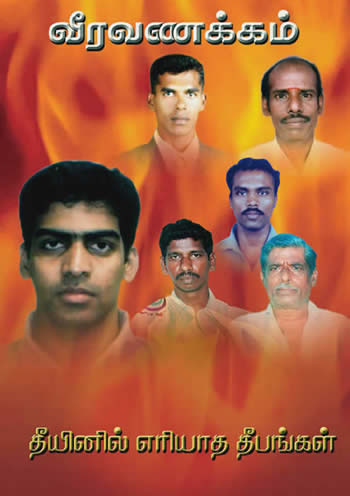 27 November 2009 also serves to mark the broadening and deepening of the struggle of the Tamil people for freedom - a broadening and deepening reflected in the
27 November 2009 also serves to mark the broadening and deepening of the struggle of the Tamil people for freedom - a broadening and deepening reflected in the 